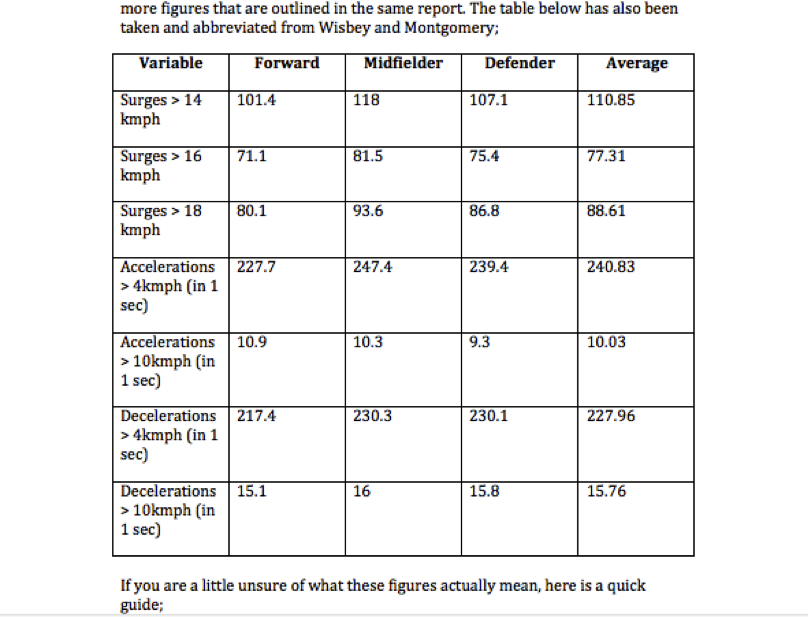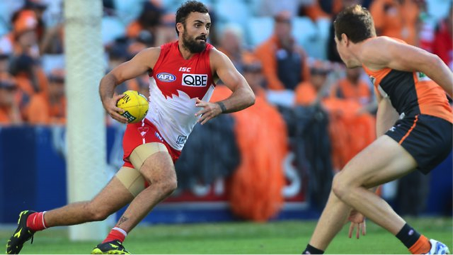Running Conditioning & Change of Direction
How many meters do you cover in a game, before you have to change directions?
And how often is this change of directions not simply turning around and running in a straight line back the other way, but a sideways movement, or a diagonal movement?
Then on top of that, how many times does this happen in a game to you?
You might not even notice it or really be able to think closely about it, but I will answer these questions for you now.
The answer to the first question will be that you rarely cover more than 40 or 50 meters before changing directions (and in reality, this 40 or 50 meters will not be in a straight line anyway, you will be deviating for a lot of it depending on the lay around you). In fact most surges will only be very short indeed before changing directions. The answer to question 2 is a lot – nice and simple answer – there is plenty of lateral (sideways movement) and many diagonal changes in direction – as footy is not run in lanes like swimming or sprinting. And the answer to the 3rd question is also a simple answer – a lot. Not only that, but a lot more than you would realise even if you acknowledge that it happens a lot.
In other articles we have touched on the in depth GPS analysis from Agility, Speed & Conditioning for Aussie Rules Footy that we use to show the running based demands in a game of footy, in order to then be able to program training accordingly (to of course closely mimic the demands.) One of the important variables that we covered is this acceleration, deceleration and changes of direction – and more specifically, just how many of them there are in a game for the average player.

Screenshot: Table taken from game analysis in Agility Speed & Conditioning for Aussie Rules
The numbers all may look a little confusing in the table, and we cover what exactly they mean in the ebook in easy to follow detail, as well as give direction with what to do. But here, the specific figures aren’t that important, merely the main point that they highlight from the running requirements in a game of footy. And that is that there is a truckload of accelerations, decelerations and changes in speed performed by every player in a game of footy! When you have the numbers above actually in front of you, you realise just how much constant change there is in the movement in a game – in the running part of it alone!
The following discussion is taken directly from the discussion in Agility, Speed & conditioning for Aussie Rules Footy;
An average of 88 surges above 18kmph in a game is very high. And with all those accelerations and decelerations listed, remember that they are speed changes that occur in 1 second – a very short space of time. And these accelerations and decelerations and general changes in speed highlight the main point we are trying to make here. It is one thing to hit a surge of 18kmph - which isn’t excessively fast – and indeed a good runner could maintain this speed consistently for quite a distance once on a roll (for example a 3km time trial run in 11 minutes – very common at the AFL draft combine – equates to an average speed of 16.34kmph.) But it is another to have to repeatedly decelerate, stop, and re-accelerate again at some stage to hit these speeds over and over, rather than simply maintaining the momentum. This is because it requires more energy to get movement and momentum going again, than simply to maintain momentum.
So in a game of footy, this acceleration and deceleration is a big part of what makes the running in a game more taxing, not just on the cardiovascular and respiratory systems, but also the muscular-skeletal system (including joints), and also the hormonal system. We expand on this in more detail later. However as of now, understand that accelerating and decelerating adds considerable more demand to the running and distance covered than merely covering a certain distance in a straight line without stopping. In analysing the data results, the authors said;
‘A high frequency of moderate and rapid accelerations was accompanied by a high frequency of decelerations. The consequence of these decelerations for this playing cohort is that it may create greater eccentric muscular load; this may be due to rapid planned stops, and also collisions or acute changes in direction. Based on this information it is likely that faster players may actually suffer more post-game muscular and general fatigue, increasing their risk of injury and prolonging their recovery.’
So it is clear even in this short discussion that when conditioning for footy with your running, it is important to not only get the right intensity (with hard running combined with rest intervals), but it is also important to get the running patterns right, by conditioning the acceleration, deceleration and change of directions. Not only does these changes of speed and direction take a hell of a lot more out of you than simply running in a straight line, they also place a far greater load on your muscles and joints – particularly in deceleration – and as a result, must be conditioned in order to avoid injury (as well as the obvious benefit of improved performance.)
This is a good time to also remind you of the important role that functional strength and power training plays in this acceleration, deceleration and changes of direction. We have covered this elsewhere, but in short if your muscles are better equipped at absorbing a load and then pushing back off (deceleration and changing directions) or at exploding from a slow jog or standing start to top speed quickly (acceleration), you will be far more effective at executing these athletic requirements in a game. So when improving at these changes of direction, it is important to not only condition the running based movements, but also the underlying strength and power required to achieve genuine improvement.



This is a very clear example of how all the physical conditioning for footy ties in together as a functional whole. There is no ‘running for cardio and strength for muscle mass’ – we simply break them down this way as an easier way to explain or understand things. The reality is that all these components are working together to achieve the same physical goal of improvement in footy-specific expressions of power.
As always it is very hard to keep articles as short as possible, but also explain things properly, and as a result, we have to leave out many pieces of important information that would help make things clearer. All of this discussion is covered in far more detail – and importantly usable detail – in Agility, Speed & Conditioning for Aussie Rules Football, as well as the important strength and power books.
If you would like more detailed and personalised direction, checkout our personalised online programming, or if you would prefer even more personalised and detailed in-person coaching (for those lucky enough to live in the beautiful city of Adelaide), check out our Athletic Development Coaching and Junior Athletic Development Coaching.
Strength Coach

